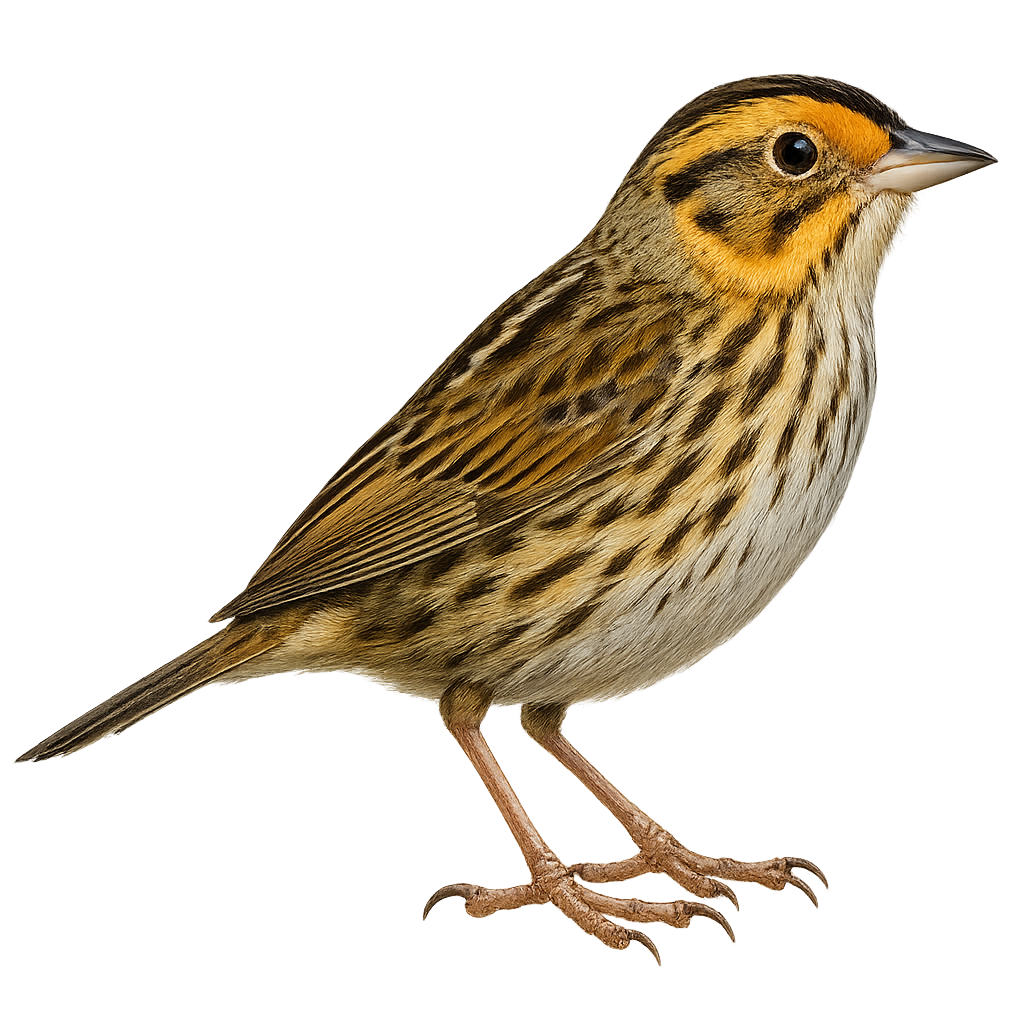Your wildlife photography guide.
Explore the saltmarsh sparrow in detail, study its behavior, prepare your shots.
Where to observe and photograph the saltmarsh sparrow in the wild
Learn where and when to spot the saltmarsh sparrow in the wild, how to identify the species based on distinctive features, and what natural environments it inhabits. The WildlifePhotographer app offers tailored photography tips that reflect the saltmarsh sparrow’s behavior, helping you capture better wildlife images. Explore the full species profile for key information including description, habitat, active periods, and approach techniques.
Saltmarsh Sparrow
Scientific name: Ammospiza caudacuta

IUCN Status: Least Concern
Family: PASSERELLIDAE
Group: Birds
Sensitivity to human approach: Suspicious
Minimum approach distance: 10 m
Courtship display: May to July
Incubation: 11-13 jours
Hatchings: June to July
Habitat:
Salt marshes, wet meadows, coastal areas
Activity period :
Primarily active during the day, with peak activity in the morning and late afternoon.
Identification and description:
The Saltmarsh Sparrow is a small passerine bird that primarily inhabits the salt marshes of the eastern United States. It is recognizable by its brown plumage streaked with black, with orange hues on the face and chest. Its tail is long and pointed, giving it its name. This sparrow is a coastal habitat specialist, feeding mainly on seeds and insects. It is often seen moving stealthily among tall grasses, searching for food. Although discreet, its melodious song can be heard in the spring. Unfortunately, its habitat is threatened by urbanization and climate change, making it a conservation concern.
Recommended lens:
400mm – adjust based on distance, desired framing (portrait or habitat), and approach conditions.
Photography tips:
To photograph the Saltmarsh Sparrow, it is advisable to use a telephoto lens of 400mm or more to capture detailed images without disturbing the bird. Salt marshes provide a natural and textured background that highlights the bird's plumage. It is best to shoot early in the morning or late in the afternoon when the light is soft and golden. Be patient and discreet, as these birds can be suspicious. Use a tripod to stabilize your camera and wait for the bird to appear in an advantageous position.
The WildlifePhotographer App is coming soon!
Be the first to explore the best nature spots, track rutting seasons, log your observations, and observe more wildlife.
Already 1 431 wildlife lovers subscribed worldwide

